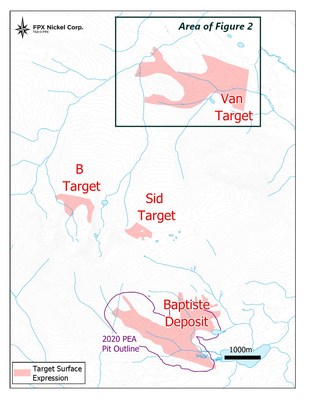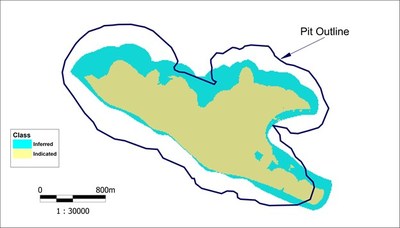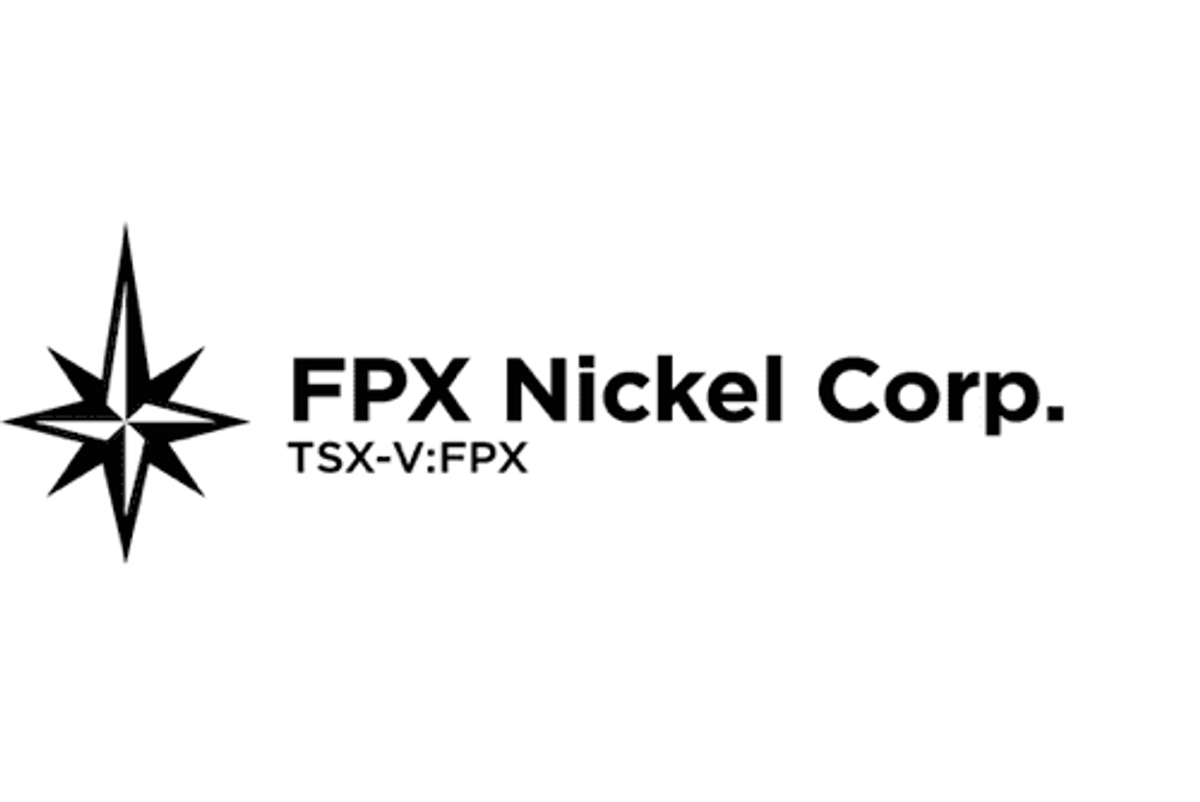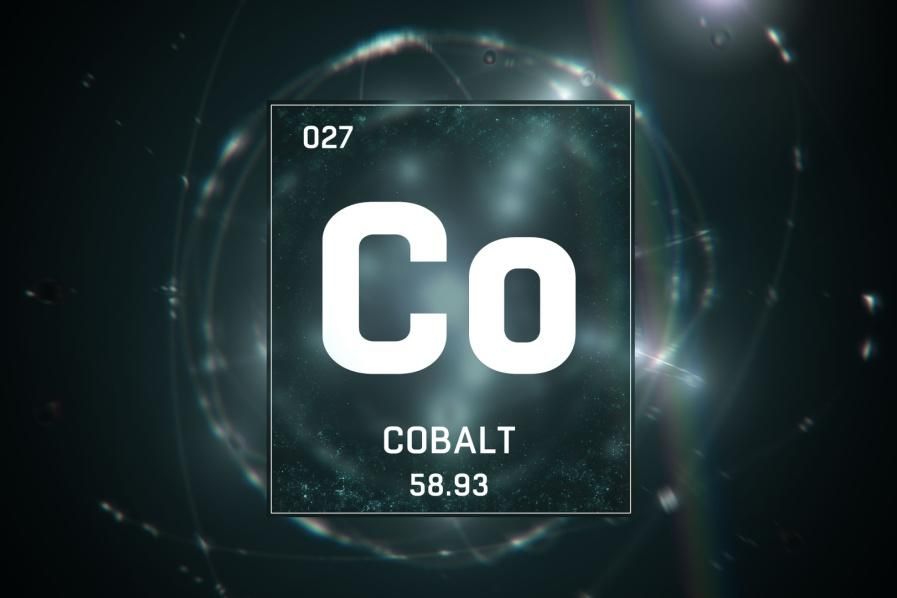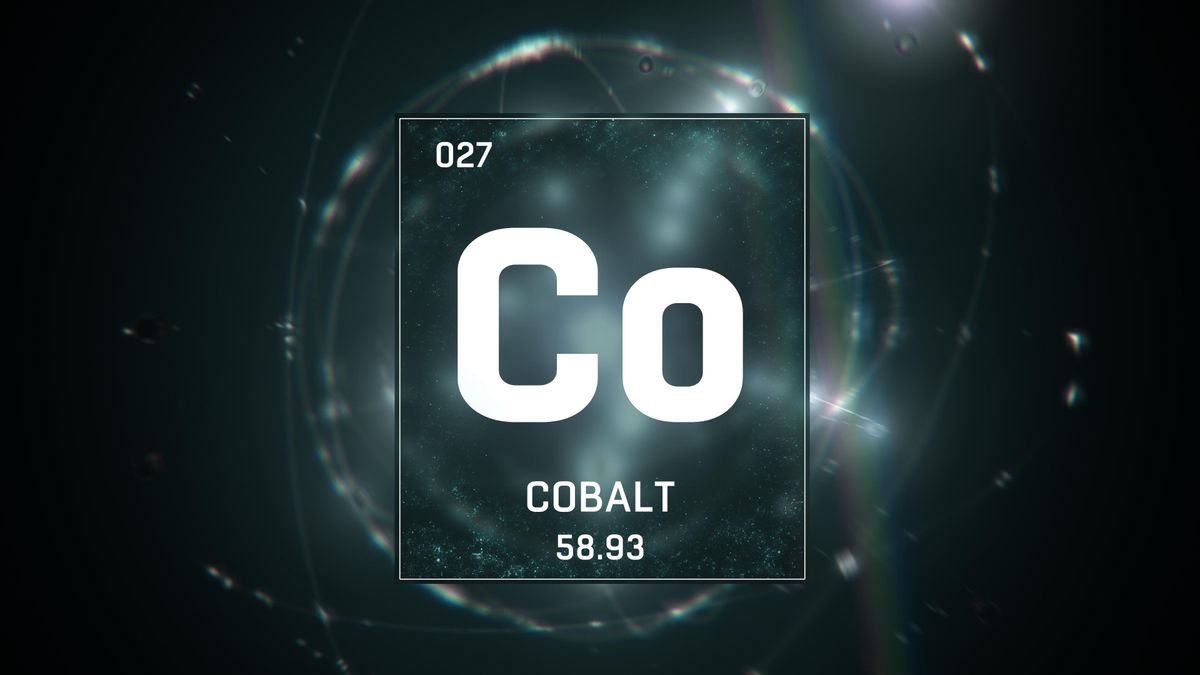FPX Nickel Corp. (TSXV: FPX) (" FPX " or the " Company ") is pleased to announce that drilling programs have started at the Company's Decar Nickel District (" Decar ") in central British Columbia. This marks the commencement of the most active campaign at Decar since 2012, with a focus on resource confirmation and expansion at the Baptiste Deposit (" Baptiste ") plus an initial drill campaign at the Van Target, located 6 kilometres north of Baptiste.
Highlights
- Maiden drilling at the Van Target, which is defined by surface rock samples with an area extent and nickel grades similar to Baptiste
- Drilling at Baptiste to convert Inferred resources into the Indicated category to support an eventual Preliminary Feasibility Study (" PFS ")
"We are very excited to assess the potential for a new discovery with a maiden, widely-spaced drilling program at Van this summer," commented Martin Turenne , FPX's President and CEO. "In addition to the drilling at Van and Baptiste, we will also conduct additional exploration around the Sid and B targets, plus regional exploration at five other under-explored areas at Decar, as described in our May 26 news release."
Van Target – Maiden Drilling
An initial nine-hole, 3,000-metre drill program has begun at the Van Target, which is located 6 kilometres north of Baptiste at similar elevations, and accessible via logging roads. The Van Target's bedrock samples occur in a previously unexplored area due to ground cover which was more recently exposed by logging activity.
Davis Tube magnetically-recovered (" DTR ") nickel analysis of 54 bedrock samples, taken at intervals of 50 to 350 meters at the Van Target, has defined an area of approximately 2.9 square kilometers (see Figure 1). This compares very favorably with the area defined by outcrop sampling and subsequent drilling at Baptiste, which is 3.2 kilometres along strike with widths of 150 to 1,080 metres.
Prior to the start of drilling, the Company completed a ground-based magnetic survey to refine the drill-collar locations for the drilling program, which will take approximately 8 weeks to complete.
Figure 1: Decar Nickel District
Figure 2: Map of Bedrock Surface Sampling at Van Target
Baptiste Deposit – Infill Drilling
A ten-hole, 2,700 metre infill drilling program has begun at the Baptiste Deposit. The mine plan in the Baptiste PEA envisaged the mining of a total of approximately 1.5 billion tonnes of material for processing over the Project's 35-year mine life, with approximately 89% of this mineralization classified in the indicated category and 11% in the inferred category. This summer's drilling program, which will take approximately 8 weeks to complete, is expected to convert the indicated resources to the indicated category to support an eventual Baptiste PFS.
The majority of the inferred resources in the Baptiste mine plan are located along the margins of the open pit, with some of the resource blocks occurring near-surface in higher-grade areas of the deposit (see Figure 3 below). The Company has developed a three-dimensional drill-hole spacing model where spacing exceeds the 200-metre spacing requirement for categorization of indicated resources.
Figure 3: Plan View of Baptiste Deposit Resource Classification
Dr. Peter Bradshaw , P. Eng., FPX Nickel's Qualified Person under NI 43-101, has reviewed and approved the technical content of this news release.
About the Decar Nickel District
The Company's Decar Nickel District claims cover 245 km 2 of the Mount Sidney Williams ultramafic/ophiolite complex, 90 km northwest of Fort St. James in central British Columbia . The District is a two-hour drive from Fort St. James on a high-speed logging road.
Decar hosts a greenfield discovery of nickel mineralization in the form of a naturally occurring nickel-iron alloy called awaruite (Ni 3 Fe), which is amenable to bulk-tonnage, open-pit mining. Awaruite mineralization has been identified in four target areas within this ophiolite complex, being the Baptiste Deposit, and the B, Sid and Van targets, as confirmed by drilling in the first three plus petrographic examination, electron probe analyses and outcrop sampling on all four. Since 2010, approximately US $24 million has been spent on the exploration and development of Decar.
Of the four targets in the Decar Nickel District, the Baptiste Deposit, which was initially the most accessible and had the biggest known surface footprint, has been the focus of diamond drilling since 2010, with a total of 82 holes and over 31,000 metres of drilling completed. The Sid target was tested with two holes in 2010 and the B target had a single hole drilled in 2011; all three holes intersected nickel-iron alloy mineralization over wide intervals with DTR nickel grades comparable to the Baptiste Deposit. The Van target was not drill-tested at that time as rock exposure was very poor prior to more recent logging activity.
As reported in the current NI 43-101 resource estimate, having an effective date of September 9, 2020 , the Baptiste Deposit contains 1.996 billion tonnes of indicated resources at an average grade of 0.122% DTR nickel, containing 2.4 million tonnes of nickel, plus 593 million tonnes of inferred resources with an average grade of 0.114% DTR nickel, containing 0.7 million tonnes of nickel, both reported at a cut-off grade of 0.06% DTR nickel. Mineral resources are not mineral reserves and do not have demonstrated economic viability.
About FPX Nickel Corp.
FPX Nickel Corp. is focused on the exploration and development of the Decar Nickel District, located in central British Columbia , and other occurrences of the same unique style of naturally occurring nickel-iron alloy mineralization known as awaruite. For more information, please view the Company's website at www.fpxnickel.com or contact Martin Turenne , President and CEO, at (604) 681-8600 or ceo@fpxnickel.com .
On behalf of FPX Nickel Corp.
"Martin Turenne"
Martin Turenne , President, CEO and Director
Forward-Looking Statements
Certain of the statements made and information contained herein is considered "forward-looking information" within the meaning of applicable Canadian securities laws. These statements address future events and conditions and so involve inherent risks and uncertainties, as disclosed in the Company's periodic filings with Canadian securities regulators. Actual results could differ from those currently projected. The Company does not assume the obligation to update any forward-looking statement.
Neither the TSX Venture Exchange nor its Regulation Services Provider accepts responsibility for the adequacy or accuracy of this release.
SOURCE FPX Nickel Corp.

![]() View original content to download multimedia: https://www.newswire.ca/en/releases/archive/June2021/29/c5105.html
View original content to download multimedia: https://www.newswire.ca/en/releases/archive/June2021/29/c5105.html
